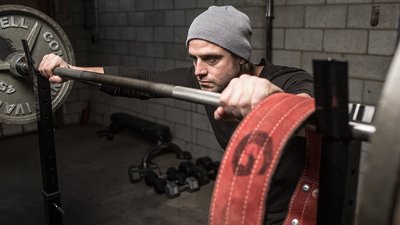Last April, Cory Gregory undertook about as herculean a task as you could cook up. On Friday, he competed in an amateur Olympic lifting meet. Then, on Saturday, he donned the posing trunks in a bodybuilding competition. To cap it off, on Sunday right around noon, he competed in a powerlifting competition. Three successive days, three very different tests of strength and skill.
But here's the most amazing part: He did well—actually, very well—in all three events.
We had to find out: How did Gregory simultaneously prepare for multiple events, each of which seems to require completely different—and often contradictory—training and nutrition styles? So we asked him.
"Why Not Me?"
Talk to Gregory for just a few minutes, and it becomes abundantly clear this 38-year-old father of three and full-time businessman is wired a bit differently than the rest of us.
"I've been training for 20 years, so I just needed something different that would move the needle for me, something that would get me out of bed on fire," he recalls. "When I noticed that all three of these would take place on the same weekend, that got my thought process going."
If you've gone through Gregory's two training plans with Bodybuilding.com, "Get Swole" and "Squat Every Day," you know that the one thing he doesn't lack is energy. But even for him, this was extreme.

"My brain works in crazy ways sometimes. This time, it came up with what I started to call 'The Muscle Trifecta.' No one had done it before, so why not me?" he says. "It had all the elements I preach as the keys to success: a date on the calendar, a goal to shoot for, and a way to make myself uncomfortable. This was an especially big challenge, because I'd never done Olympic lifting before."
But this is a man who saved for college by working as an underground coal miner, so it stands to reason that he would add an extra challenge to his challenge.
"I wanted to do something that was extremely hard on my body to test my limits, and I wanted to be competitive in each of the shows. I even told as many folks as possible about it, to make myself publicly accountable," he recalls.
Nothing tests your body more than an ungodly starting time, so the man who once popularized the hashtag #upearlytotrain decided to start his workouts at 4 a.m.
Day 1: Olympic Lifting
Gregory has a long history of competing in bodybuilding and powerlifting meets—some 45 in all. But Olympic lifting was an altogether new challenge for him. He says his iron experience gave him an advantage—and some disadvantages. For one, he had to learn new, longer movements that required greater power, speed, and technique.
"In Olympic lifting, you have to move fast, be graceful, and have mobility," he says. "It's much different from powerlifting. When you snatch the barbell, you have to be able to catch it in a full-squat position with overhead mobility and stability, and then rise up properly. It's an entirely different animal than a regular deadlift."
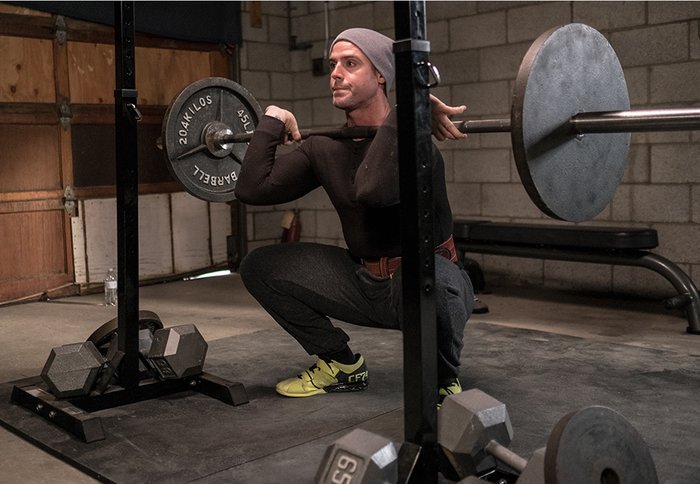
Nevertheless, Gregory found he had a built-in advantage when it came to learning snatches and clean and jerks. "My base was already so strong. My extensive squatting, both in front and back, transferred over really well."
But his strength and muscle had also created some limitations. "My chest was super tight, so my mobility was a little messed up. My shoulders and lats were so strong from all the years of bodybuilding, which limited me too. But once I improved my mobility, I was able get comfortable with new body positions."
Resolving those issues allowed Gregory to go from not being able to lift 95 pounds overhead while in the squat position to using more than 200 pounds.
Results: Cory Gregory's Muscle Trifecta, Day 1
- Snatch, 185 pounds
- Clean and jerk , 250 pounds
Day 2: Bodybuilding
While still working on his Olympic lifts a couple of days a week, Gregory's attention turned to conditioning for the bodybuilding contest. Fortunately, he says, he was already looking pretty good, because his training style and diet supported a lean physique. And he didn't have to heavily diet to drop his body fat as most competitors do, which meant he didn't have to do cardio.
"I was already squatting and lunging every day as part of my regular training, which for me takes the place of traditional cardio. I lunge 800 meters on a track as part of that, which takes about 25 minutes a day," he says. "Squatting like a thousand days in a row really brought my legs up, and all the lunges helped with the separation of my glutes and hamstrings."
As the competition approached, Gregory had to walk a fine line, dialing in his hydration without going overboard.
"Doing Olympic lifting before bodybuilding worked out especially well for me, because I could run my hydration pretty close to borderline. I had even started taking dandelion root during my Olympic lifts to kick-start the dehydration process," recalls Gregory. "But I had no idea what I was going to look like the next day. I was a little nervous that by the time I got to the bodybuilding show, I'd be as soft as a marshmallow. But when I woke up on the day of the competition, I was surprised to see that I had fairly good separation in my thighs and had hit the right level of dehydration."
Nor was Gregory following what would be considered a traditional precontest diet. Instead, he was doing what he calls "anabolic fasting," a program he created by combining principles he learned from world-class powerlifter and sports-medicine physician Mauro di Pasquale, MD, author of "The Anabolic Diet," and from noted nutrition and supplementation expert Eric Serrano, MD.
"I'd always followed anabolic-diet principles, and then did some research on intermittent fasting. I mixed the two together with quite a few additional changes based on my own findings and found it worked incredibly well," he says.
With the morning prejudging behind him, Gregory made an unexpected move, at least for a man looking to win his class later that evening: He began his carb loading for the following day's powerlifting events.
"I started to carb load hard immediately after prejudging," he recalls. "If you look at the video, you can see my belly is a little bit full at the evening competition. It was hard to hold on to my shape toward the end of the bodybuilding finals, because I had already eaten two full sleeves of Oreos. Luckily, I didn't drink any water."

Gregory's dry condition was good enough for him to take his class, but that meant additional time onstage posing for the overall trophy. He says the extra work wiped him out. "I got through it, and I was beat. I was incredibly dehydrated. I didn't think I'd be as tired as I was."
After posing, Gregory walked offstage, having lost out on the overall, and immediately got to work eating. He had to; the powerlifting meet was just 14 hours away. "I drank half a gallon of water, took some creatine, downed a whole liter of Gatorade, and then literally ate potato chips, pizza, chicken noodle soup, bread, and anything else that was high-sodium to hold water in. I just started just smashing down food."
It worked. Gregory woke up the next morning up 12 pounds to 190, though he was competing at 178. Those extra pound weren't a problem, since he had weighed in for the powerlifting event 24 hours earlier.
Results: Cory Gregory's Muscle Trifecta, Day 2
- First place, light-heavyweight class
Day 3: Powerlifting
Gregory headed out the door Sunday morning in great spirits. The day's competition would test him at his first love, powerlifting, and would be hosted at a gym he co-owns, the Old School Gym.
"I'd been eating clean for so long, and had eaten so much the night before, that my body was really inflamed," he says. "Everything was tired and hurting. I felt beat up. I took some ibuprofen and met with my chiropractor, who had to concede, 'Dude, your nervous system has got to be a train wreck.'"
Then there was the nagging injury from attempting a 600-pound deadlift five months earlier that still hadn't healed. "When I announced I'd be competing in this trifecta, I was thinking I'd be 100 percent by April, but I wasn't even close," he says. "My piriformis and my SI joint were still pretty banged up. It was a tough challenge for me mentally, because to be honest, I wasn't really healed enough to compete."
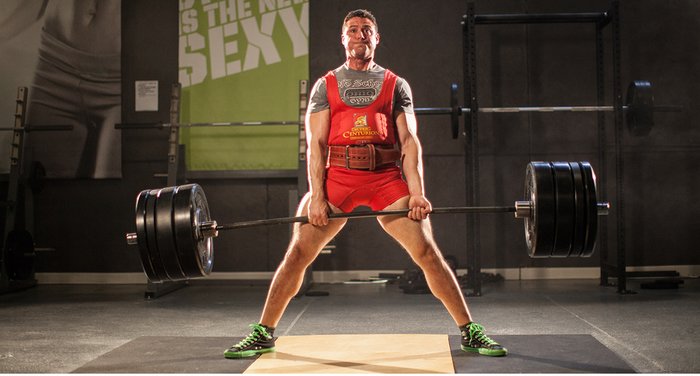
To make matters worse, Gregory had tweaked his knee on his second snatch attempt two days earlier. "I had some pain in my knee on Friday, but I knew it was going to have to get me through the day."
Tired, sore, and mentally spent, Gregory told himself that all he had to do was make it through a few of the routine lifts he made all the time—even on his worst days in the gym. But, as it turned out, this wasn't going to be a routine day.
"I'm not going to lie. When I was squatting in the warm-up room, 225 felt heavy—really heavy," he recalls. "The muscles just didn't seem to be activating. But I thought about all the people who had come here to see if I could finish this. There were 150 people jammed in my gym, all hardcore lifters, and I'm thinking to myself, "This is what you woke up today for. This is the stuff legacies are built on. This is what you wanted. You've got to show up.'"
He opened with a squat of 405, a totally manageable amount for him in ideal circumstances. "I have to admit, I looked pretty rough," he says. "I should have been able to smoke that weight! From there I was only able to move up to 440."
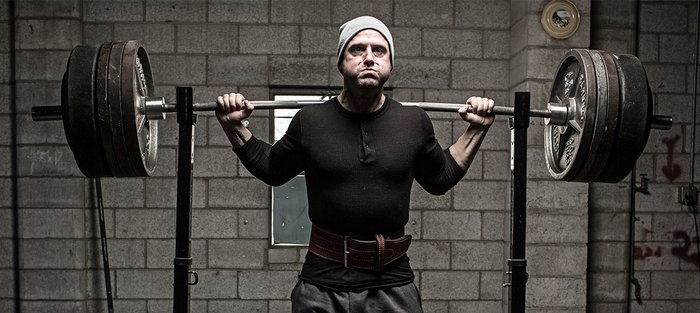
But then something happened. Gregory said that at 440, his nervous system seemed to wake up. Maybe it was the crowd, he theorizes.
"I called 480, and I was like, 'You know what? Fuck this. Five hundred, and I'm all in.' I told my guy, 'You wrap my fucking knees the hardest you've ever wrapped them. I'm going to take a deep breath and I'll break in half before I quit pushing on this barbell.' It was sheer will. I probably had no business squatting that weight, but I was so mentally there."
Results: Cory Gregory's Muscle Trifecta, Day 3
- Squat, 500 pounds
- Bench press, 315 pounds
- Deadlift, 500 pounds
What's Next After the "Muscle Trifecta?"
At the end of the weekend, Gregory's scorecard had posted runner-up finishes in both the powerlifting and Olympic-lifting competitions, and first place in his class in the bodybuilding event. But placings don't tell the whole story.
That day was really about a man who, in creating a near-impossible challenge that to our knowledge has never been attempted, had no choice but to dig deep and discover entirely new sources of strength.
Six months later, Gregory has already moved on to some new challenges. He's set his sights on competing in the CrossFit Games as a master's athlete.
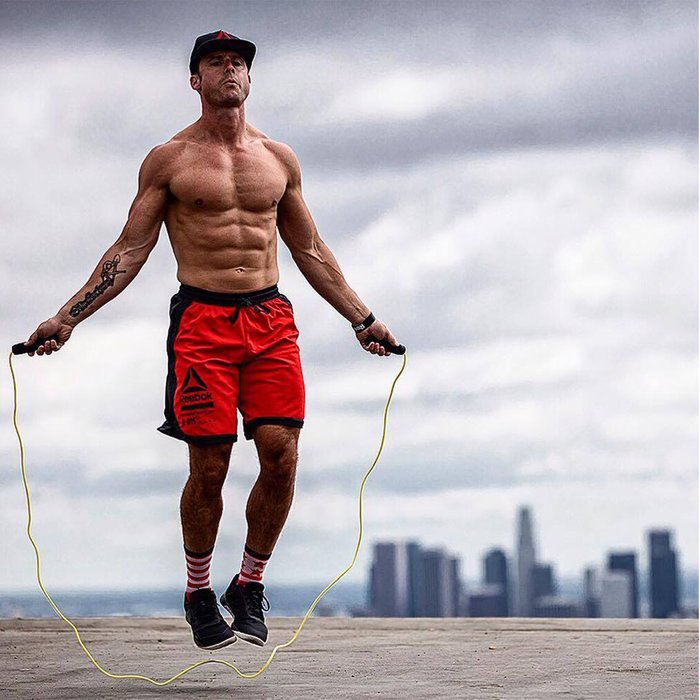
Instagram via corygfitness
"I've been telling people for the last year I'm going to try for the CrossFit Games when I'm 40. I just know that continuing to say it will make me work harder to actually achieve it. It helps me to speak things into reality," he says.
But as always, there's an added wrinkle. "I'll be honest with you: I really don't like anything much outside of just regular lifting," he confesses. "I have to force myself do other kinds of conditioning to keep challenging myself. But I don't really like the [CrossFit] training at all."
If you live in central Ohio, you may catch a glimpse of Gregory in the predawn hours in hot pursuit of his latest goal. Of course, you'd have to be at the gym at 4 a.m. sharp to watch his bruising 90-minute weight session. Then you could head over to the local CrossFit gym to catch the rest of his training before he heads off to work.
Like I said earlier, Cory Gregory's just wired a bit differently than the rest of us.

